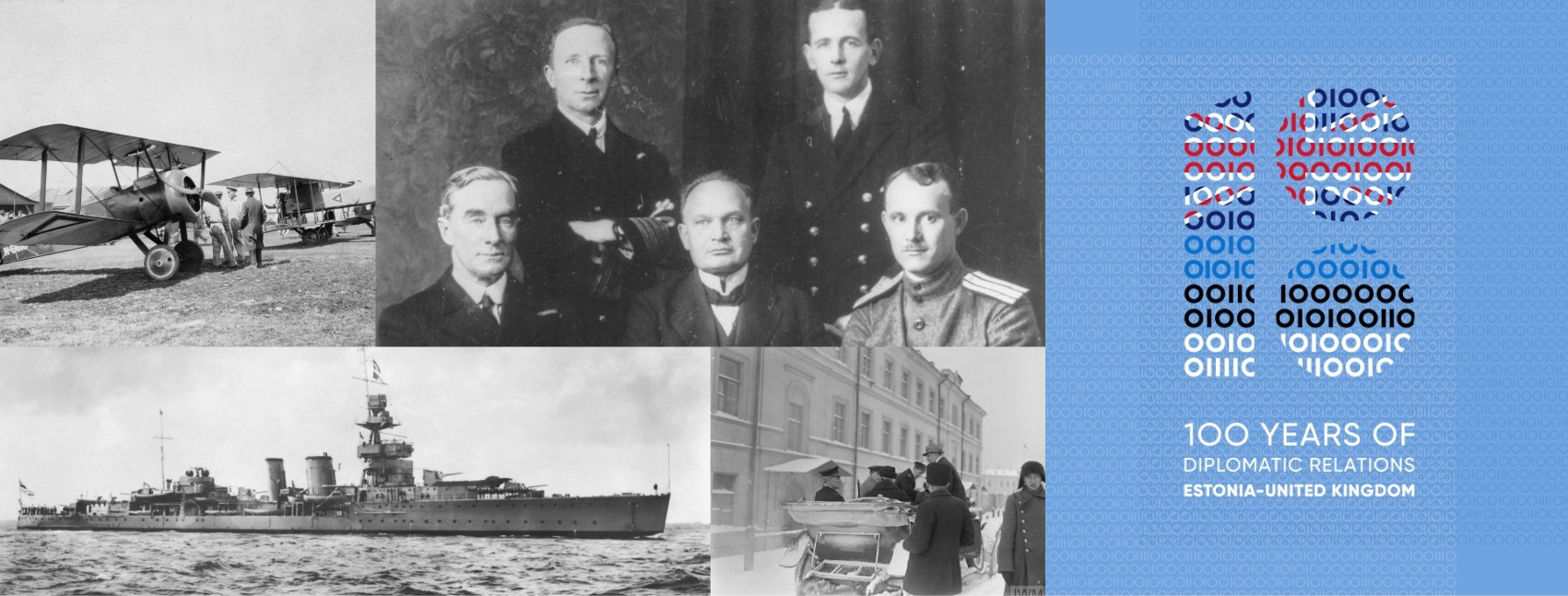The United Kingdom and support to Estonia during the struggle for independence - Introduction
The purpose of this website is to capture the totality of British support to Estonia during its struggle for independence. This involved complex political discussions and policy making during an ongoing war with Germany and Austro-Hungary, the collapse of three empires and the Paris Peace Conference. The most visible demonstration of British commitment was the deployment of a Royal Naval squadron to the Baltic. One of their tasks was to support a Secret Service agent in Russia. In addition, British Army and Royal Air Force personnel provided training and took part in operations. The context that created the opportunity for Estonian independence started early in 1917.
The March 1917 revolution in Russia provided an opportunity for greater autonomy for Estonians. There was agreement with the Russian Provisional Government that Estonia would be a ‘Free State within the Russian Federation’ and elections were held in July. Dissatisfied with the result the Bolsheviks seized power in Tallinn. The Germans, seeking to threaten St Petersburg, as part of a strategy to force the Bolsheviks into peace negotiations, captured the islands of Saaremaa and Hiiumaa. The Bolsheviks and the Germans then vie for influence over Estonia until the Bolsheviks abandoned Tallinn ahead of a German arrival. Seeing the opportunity, Estonia declared independence on 23 February 1918 in Parnu and the next day in Tallinn. This was short-lived as the Germans arrived on 25 February, and on 3 March, under military pressure from Germany, the Bolsheviks sign the Brest-Litovsk Treaty.
Anticipating that the route to independence would be difficult, an Estonian delegation had been sent abroad to introduce Estonia to the world and to advocate for support. In January 1918 they were in Petrograd (St Petersburg), in March in Stockholm and in April a delegation of Ants Piip, Kaarel Pusta and Eduard Virgo arrived in London. They met Arthur Balfour, the UK Foreign Secretary, at which they submitted a memorandum, highlighting the anti-German feelings of the Estonian people. Balfour notified Estonia’s foreign delegation of the readiness of His Majesty’s Government to recognise the Estonian Provisional Land Council as a de facto independent body, until the beginning of the Paris Peace Conference that started on 18 January 1919. It was at the Conference that all the claims for independence, made as a result of the collapsed Russian, German and Austro-Hungarian Empires, would be decided. The letter also affirmed British readiness to receive Professor Ants Piip as the diplomatic representative of the Estonian Provisional Government. Piip stayed in London to become the first Estonian Ambassador. He met with military staff to make arrangements to assist the Estonian government with a supply of arms and a Royal Naval Squadron.
From then on, British political policy started to take shape. There was a House of Commons debate on how to end the war by not rewarding Germany for its aggression, such as allowing them to make their princes monarchs in Lithuania, Courland and Estonia. From autumn 1918 it became British and Estonian joint policy to attempt to convince Sweden, Finland and Denmark to send forces to help Estonia in order to fill the power vacuum that will develop when the Germans leave and in order to keep the Bolsheviks out. On 11 November 1918, Armistice Day, the British Cabinet met to discuss a naval intervention in the Baltics. The motives were: defeating Bolshevism; maintaining Britain as the predominant sea power in the Baltic; protecting British investments in Russia; protecting the naval base at Murmansk and countering German activity in the area as the Armistice only applied to the Western Front. On 20 November the British Under-Secretary of State for Foreign Affairs, Robert Cecil, declared support for Estonia and promised to provide military assistance. On 27 November, under command of Rear Admiral Alexander-Sinclair, Royal Navy 6 Light Cruiser Squadron (5 x light cruisers and 9 x destroyers) 1st and 2nd destroyer flotilla, seven minelayers and a troop ship left for Estonia from the Firth-of-Forth. On 28 November at 0530 hours the Bolshevik 7 Army, 6 Rifle Division attacked Narva. Followed by the 2 (Viljandi) Communist Battalion attack from the south west by boat. Between 4000 and 6000 men attacked in total. The Estonian War of Independence began.
The Royal Navy arrived in Tallinn bay at 3pm on 12 December 1918. The Bolsheviks were only 35kms from Tallinn. After unloading vital weapons and ammunition, on 15 December, the Royal Navy fired its first shots in support of Estonian independence.
See the timeline for a detailed account of those events.



